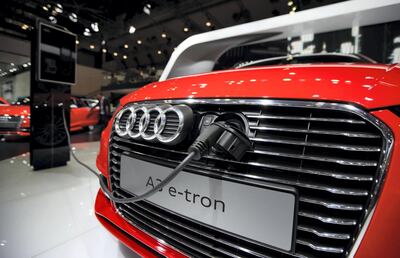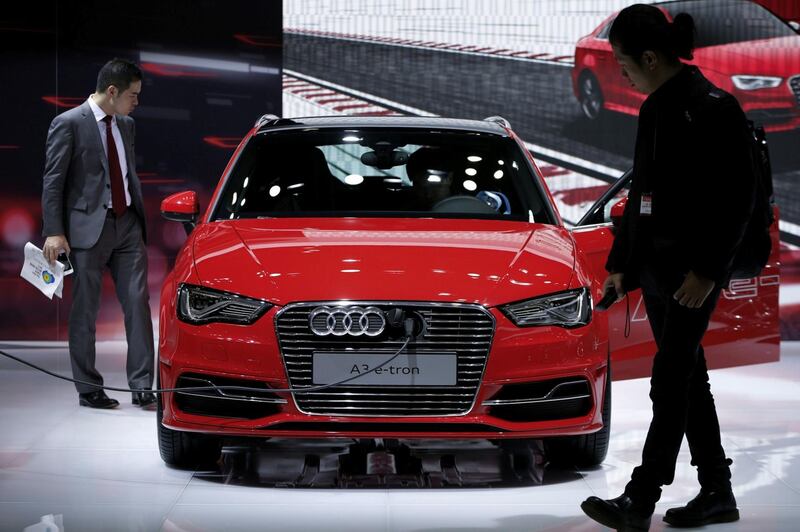Since I invested in a hybrid car, people have stopped talking to me. When I enter a party, friends subtly fan out to the sides, like I am Moses parting the waters. It might be my intimidatingly increased environmental credentials, but it's more likely the severe plummeting of my conversation skills. I can talk of nothing but hybrids, but you would be like that, too, if you joined the group of people who want to save the planet while making absolutely zero effort.
I intend to fully milk this social cache until hybrids become commonplace. I take my time charging up so I can hang around on the pavement for as long as possible. Passersby come to chat about the charging process and dog-walkers nod approvingly in my direction. Some people ask how much a full charge costs (somewhere in the tens of dirhams) and others, weirdly, simply stand and watch.

A mother on a school-run asked if my battery had run out and whether I needed what she called "a jump". Not to trade in stereotypes, but neither this Range Rover driver nor I could jump-start a car if our lives depended on it.
I was also already holding a bright yellow cable in my hand. "It's electric," I explained. "Ooh," she said.
Some interactions fare better than others. I stopped to talk to a man charging his Tesla once and we had a fine old time comparing our favourite hybrid apps and laughing smugly about the people who still rely on petrol. "I've driven from London to France and back with my Tesla on one charge," he said. "What's your range?"
"Ha ha," I said, not laughing, but simply saying the words "ha" and "ha" slowly out loud, like they were small clouds forming in my mouth.
For any non-Tesla owner, admitting the range of your electric car to a Tesla driver is the equivalent of confessing you do not actually know how to swing a golf club despite wearing all the gear.
"Mine's 300 miles," he said, seemingly oblivious to my silence. Embarrassment appears not to register as a potential emotion for Tesla owners.
“Mine is … less,” I said.
"100?" he suggested, a shade of pity evident on his face.
"Kind of," I said, which isn't a numerical response. "It's an Audi." My range, for the record, is about 50 kilometres.
He asked if it was the new Audi and I shook my head. It's used. "Oh," he said. "The e-tron. Well, it's a start."
The Audi e-tron is a plug-in hybrid. Volvo, BMW, Mercedes, Lexus and Mitsubishi all have various "e" or "i" prefixed ranges that essentially add a battery option to their existing models. These are great if you're on a Waitrose Essentials, Premium Economy kind of budget. Non-plug-in options, such as the Toyota Prius, work differently, with the engine charging the battery while the car idles. It then runs on the battery until it reaches a certain speed. Though the original Prius led the electric vehicle market early, plug-ins are more environmentally friendly and in 2016 Toyota launched its Prius Plug-in Hybrid.
Friends of mine in Dubai have a Tesla – those are fully electric – and brag about how much money they have saved because they don't need to fill it with petrol, saying it is "into the thousands of dirhams".
I've heard them repeat the story of their one charging failure, when they had to push their car down the side of the E11, with all its doors open to act as expensive sails.
The anecdote makes me smile, not because of the irony of the height of car technology being powered by the muscles of two men, but because it makes me feel as though I'm not the only one whose conversational range is as extensive as my Audi's battery life.
I don't delude myself that electric cars are the answer to everything. Drilling for lithium and other rare-earth materials has both environmental and social costs among the communities that live where those materials are found. The idea of mining the ocean floor for lithium seems to be as problematic. But on balance, hybrids are that crucial thing: a step away from fossil fuel dependence and hopefully a move in the right direction – a much more elaborate, albeit expensive, version of bringing a canvas bag to the supermarket.








